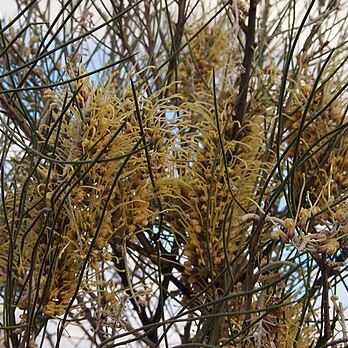A small gnarled tree. It grows 4-5 m high. The bark is thick, corky and furrowed. The leaves are needle like and 30 cm long and have a sharp point. The flowers are in yellow clusters. The fruits are in clusters. They are woody. These woody capsules have beaks. They contain 2 winged seeds. These are released when the capsule splits open.


